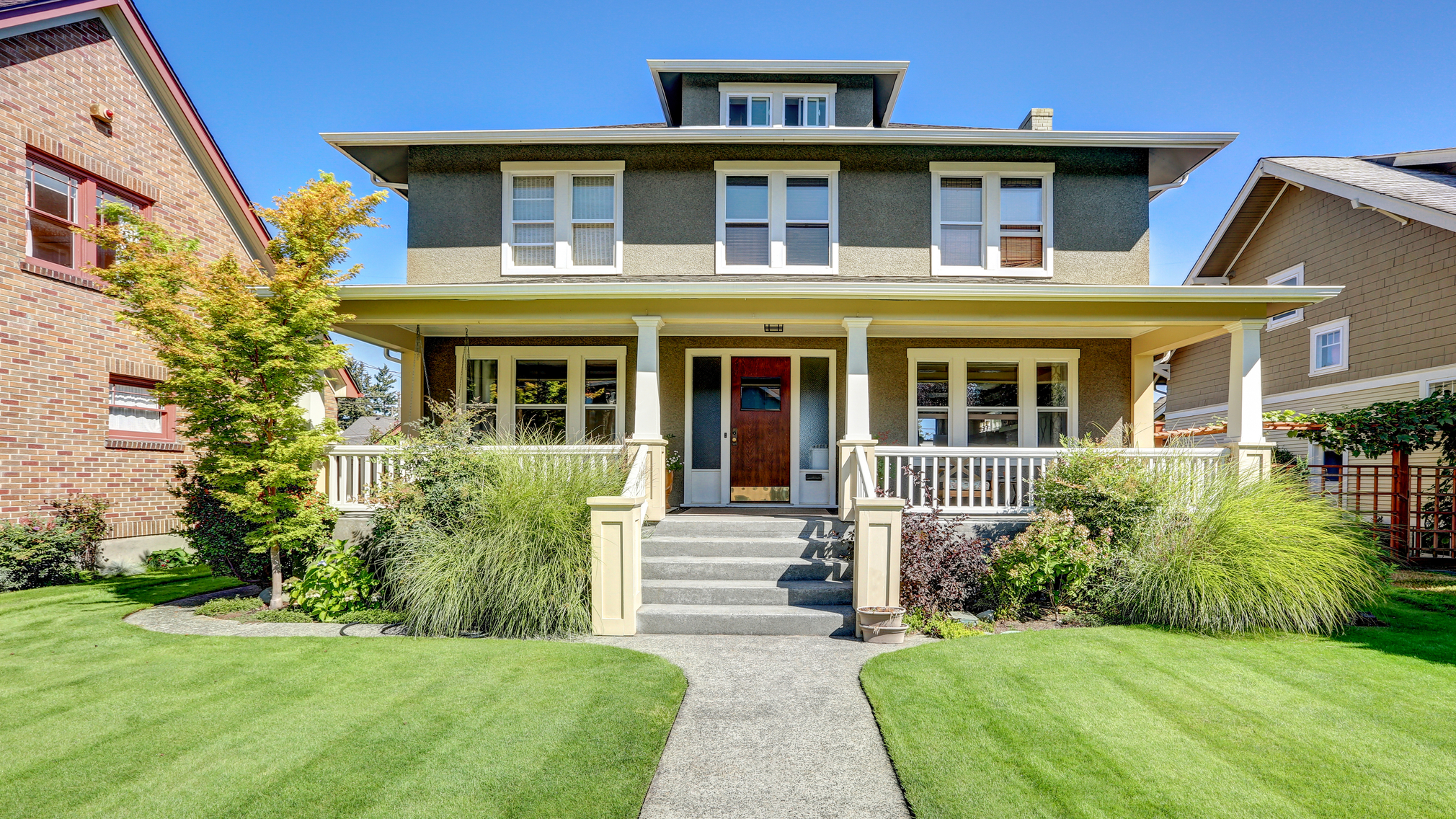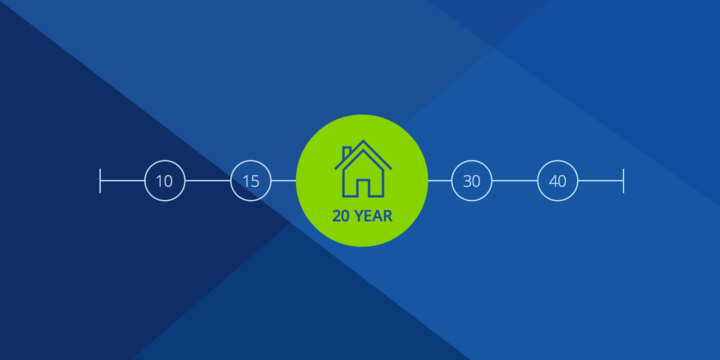What is Amortization?


Written by Alycia Lucio on July 18, 2024
Amortization is the process of repaying a debt by making a series of fixed payments for an agreed-upon length of time. Mortgage lenders use an “amortization schedule” to track how much principal and interest the borrower will have left to pay at any point throughout the life of their home loan.
When you go through a mortgage application process, you’ll have an opportunity to review an amortization schedule, so that you can get a full breakdown of your monthly payments. To help you better understand the process, we’ll walk you through how amortization works and how it’s calculated, and offer some examples of how you can create your own amortization schedule.
What is mortgage amortization?
Mortgage amortization is a schedule for repaying your mortgage over a period of time, usually 30 years, although some mortgages can be for a longer or shorter term. When you make a payment, you’re paying interest on the loan as well as paying down the principal. The share of each payment that goes toward principal and interest changes over time.
How does amortization work?
Amortization works by spreading out the amount you borrow plus interest on that money over the number of years you agree to repay the loan to create a repayment schedule. The monthly amount is fixed, but the share of each payment that goes toward principal and interest changes over time.
Typically, the earlier payments include a greater share of interest than principal. This means that you won’t start making a substantial dent into the borrowed amount until the loan’s later years. As you continue to pay over time, the balance shifts so that the majority of your loan payment will go toward paying down the principal.
Here’s an example:
Let’s say you borrow $320,000 to buy a $400,000 home, and agree to repay that money over 30 years at a fixed interest rate of 6.5%. Your payment, for principal and interest alone – that is not including taxes and insurance, would be $2,023 a month.
According to the repayment schedule, your first payment would break down as follows: $289 toward the principal, and $1,733 toward interest. After 10 years (or 120 months), the breakdown would be $550 in principal and $1,472 in interest. After 20 years (or 240 months), the share is $971 in interest and $1,052 in principal. Your final payment at 30 years (or 360 months) would be $11 in interest and $2,009 in principal.
| Month | Interest | Principal |
| Month 1 | $1,733 | $289 |
| Month 120 (10 years) | $1,472 | $550 |
| Month 240 (20 years) | $971 | $1,052 |
| Month 360 (30 years) | $11 | $2,009 |
Types of loan amortization
Mortgages are amortized differently. Here are the most common types of loan amortization:
Fully amortized loans
A fully amortized loan is designed to be paid off entirely by the end of the loan term. Each monthly payment reduces your principal balance, ensuring that your outstanding debt balance is zero once you reach the final payment.
Positive amortization
Positive amortization is when your monthly payments sufficiently cover the interest and a significant portion of the principal balance. This results from a gradual reduction of your outstanding balance over time.
Negative amortization
With negative amortization loans, also known as “deferred interest” or graduated payment mortgages, the monthly payment does not cover the entire interest due. Instead, the unpaid interest is added to the principal balance, causing the loan to grow over time. Some borrowers experience negative amortization with adjustable-rate mortgages (ARMs) and interest-only loans.
Accelerated amortization
Accelerated amortization involves making larger payments than required or additional payments outside of the repayment schedule. This allows you to repay your loan faster than the initial schedule, which saves you interest charges in the long run because you’re reducing the principal more quickly.
Amortization by loan type
Amortization may look different if your mortgage has a fixed or variable interest rate, the loan requires shorter initial principal payments, or interest-only payments. Here’s some examples of how different types of mortgages impact amortization.
Fixed-rate mortgages
With fixed-rate mortgages, your monthly payments stay the same through the entire term of the loan but the share of the payment that goes to principal and interest changes over time. (Note: this includes only principal and interest. Property taxes and insurance costs may be included in your mortgage payment and can change.)
Adjustable-rate mortgages (ARMs)
ARMs have variable interest rates that fluctuate with market conditions. Once the fixed interest rate period ends, your monthly payment amount can change multiple times over the life of your loan based on current interest rates. Fluctuating interest rates will affect your amortization schedule each time your rates are recalculated. Your interest payment may be larger or smaller than in the previous months, even when gradually paying down your principal, because the percentage of interest owed on your principal is changing. Even though the interest rate and monthly payments may change, you should still expect a zero balance upon making your last payment.
Balloon mortgages
Balloon mortgages have shorter initial terms, typically five to seven years, during which you make smaller payments. After this period, you make a “balloon” payment (which is a large lump sum payment) to pay off the remaining balance.
During the initial period, your monthly payments will follow a standard amortization schedule, with a portion going toward interest and the rest toward the principal balance. However, since the loan term is shorter, the amortization is accelerated, meaning a larger portion of each payment will go toward your principal balance.
Interest-only mortgages
With interest-only mortgages, your monthly payments cover only the interest charges for a set period — typically five to 10 years. After this initial period, your payments increase to include interest and principal amounts, resulting in higher monthly payments. These are the riskiest types of loans, since they result in much larger payments after the adjustment period.
How to calculate amortization
To amortize your mortgage and see how much of your monthly payment goes toward principal and interest and how much balance remains, follow these four steps:
- Divide your annual percentage rate by 12 to get a monthly rate
6.5% / 12 = 0.54% - Multiply your principal loan balance by your monthly interest rate to get your interest payment for the current month
$320,000 * 0.54% = $1,733 - Subtract the interest payment from the total monthly payment to calculate your principal payment
$2,023 - $1,733 = $290 - Subtract the principal payment from the loan amount to see your remaining loan balance
$320,000 - $2,023 = $317,977
Let Zillow do the math for you with this amortization calculator. The calculator creates a chart and other visuals that help you see how much of your mortgage payment will go toward paying interest and principal over your loan term. You can view the schedule by month or by year.
What is an amortization schedule?
An amortization schedule breaks down exactly how much of your payment is going toward reducing your principal balance and how much is going toward interest. Your lender will provide you with your amortization schedule at the beginning of your loan term. The schedule will serve as a roadmap for tracking your progress toward paying off your mortgage debt and owning your home.
Here’s an example of an amortization schedule for the first 12 months of a $320,000 mortgage with a 6.5% interest rate.
| Month | Interest | Principal | Remaining |
| 1 | $1,733 | $289 | $319,711 |
| 2 | $1,732 | $291 | $319,420 |
| 3 | $1,730 | $292 | $319,127 |
| 4 | $1,729 | $294 | $318,833 |
| 5 | $1,727 | $296 | $318,538 |
| 6 | $1,725 | $297 | $318,241 |
| 7 | $1,724 | $299 | $317,942 |
| 8 | $1,722 | $300 | $317,641 |
| 9 | $1,721 | $302 | $317,339 |
| 10 | $1,719 | $304 | $317,036 |
| 11 | $1,717 | $305 | $316,730 |
| 12 | $1,716 | $307 | $316,423 |
How does amortization look with extra mortgage payment?
While amortization helps determine your minimum monthly payment, it doesn’t prevent borrowers from making larger or additional payments. By making extra payments on your mortgage loan each month or several times per year, you can save money on interest and pay off the loan in a shorter amount of time.
Paying an additional $50 each month on the same $320,000 mortgage with 6.5% interest rate can save you up to $33,799 in interest and pay the 30-year loan off two years sooner.
Here’s what the first 12 months of your amortization schedule looks like with an additional payment each month:
| Month | Interest | Principal | Remaining |
| 1 | $1,733 | $339 | $319,661 |
| 2 | $1,732 | $341 | $319,320 |
| 3 | $1,730 | $343 | $318,977 |
| 4 | $1,728 | $345 | $318,632 |
| 5 | $1,726 | $347 | $318,285 |
| 6 | $1,724 | $349 | $317,937 |
| 7 | $1,722 | $350 | $317,586 |
| 8 | $1,720 | $352 | $317,234 |
| 9 | $1,718 | $354 | $316,879 |
| 10 | $1,716 | $356 | $316,523 |
| 11 | $1,715 | $358 | $316,165 |
| 12 | $1,713 | $360 | $315,805 |
Remember, if you plan to pay more than the required amount, make sure to speak with your loan servicer to ensure the extra payment goes towards your principal balance.
Mortgage loan amortization seems complex in the beginning, but once you understand how it works, you’ll feel more empowered to take control of your home loan debt. Fortunately, you don’t have to worry about doing the math yourself, as your lender will amortize your mortgage loan for you. Check out our loan options or take the first step towards getting a mortgage.*
*An equal housing lender. NMLS ID#10287
Tags
How much home can you afford?
At Zillow Home Loans, we can pre-qualify you in as little as 5 minutes, with no impact to your credit score.
Zillow Home Loans, NMLS # 10287. Equal Housing Lender
Get pre-qualifiedHow much home can you afford?
See what's in reach with low down payment options, no hidden fees and step-by-step guidance from us at
Zillow Home Loans.
Zillow Home Loans, NMLS # 10287. Equal Housing Lender
Calculate your BuyAbility℠



